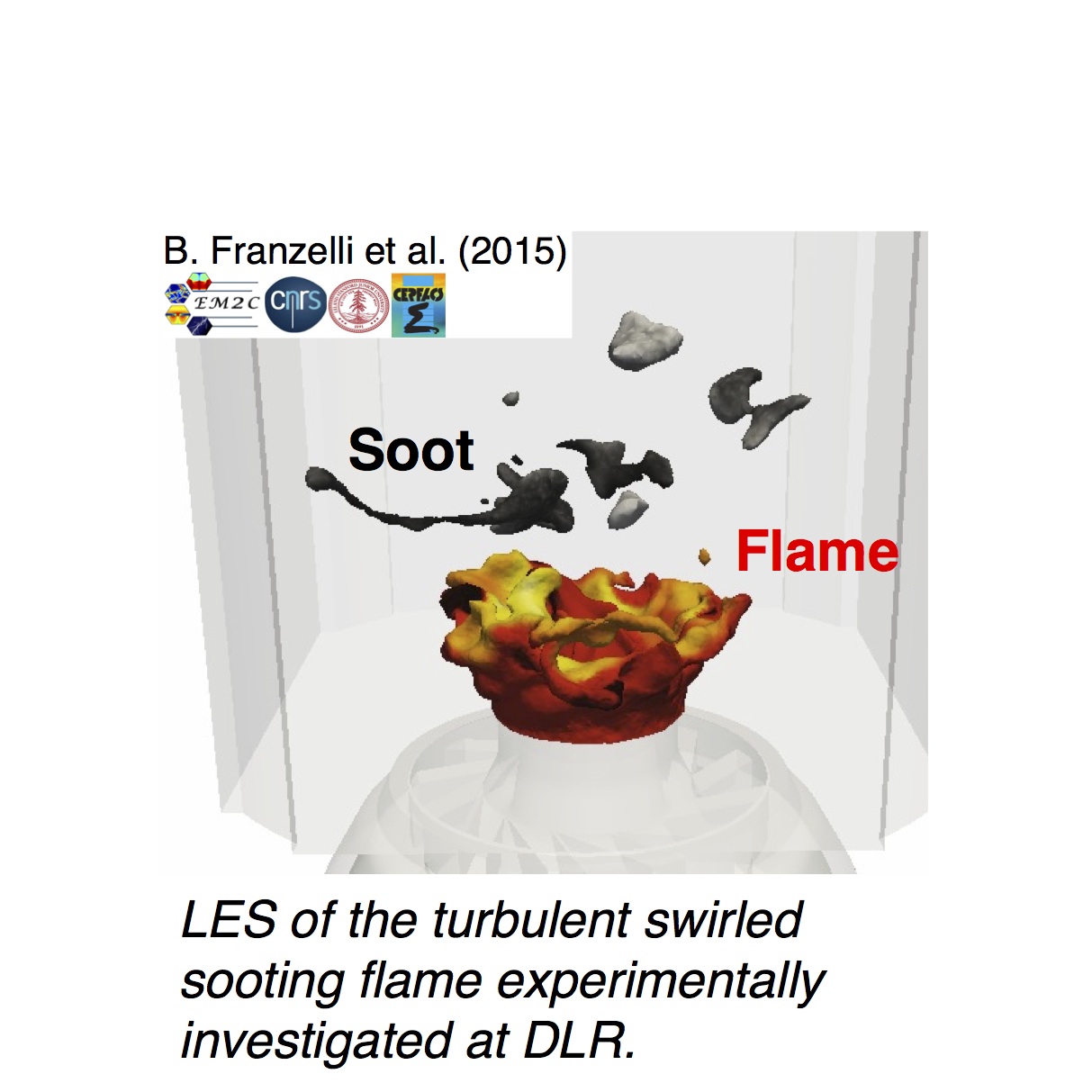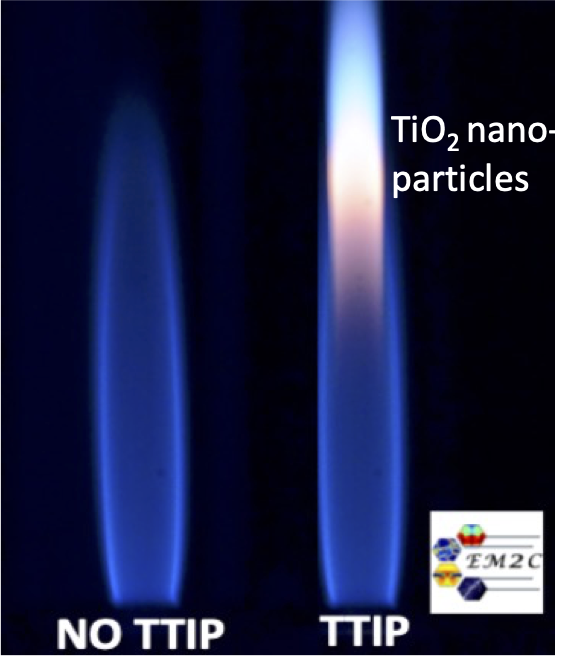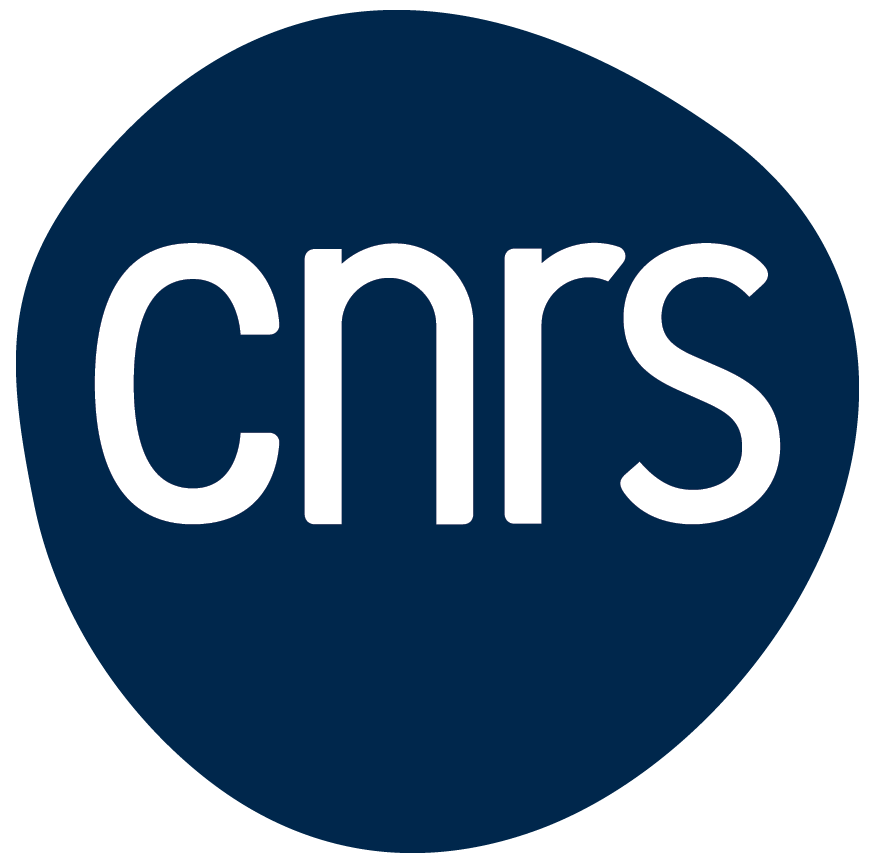
SOTUF - an ERC starting grant at EM2C
A new look at nanoparticle production processes in turbulent flames leading to novel models for predictive LES
SOTUF is an ERC starting grant (see erc.europa.eu/starting-grants for information on ERC starting grants) dedicated to the study of soot production in turbulent flames combining advanced space- and time-resolved optical diagnostics and high-fidelity numerical simulations. The ERC starting grant also supported the generalization of the developed experimental and numerical framework to the study of metal-oxides synthesis in turbulent flames by focusing on the fundamental understanding of nanoparticles-flame-turbulence interactions. The project is coordinated by CNRS (DR04 Ile-de-France Sud) and lead by the EM2C laboratory. SOTUF started in June 2018 and run until 2024. The Principal Investigator of the SOTUF project is Dr. Benedetta Franzelli.
Today, the goal of the SOTUF activities is to provide new insights on the processes governing the production of carbonaceous and non-carbonaceous nanoparticles in turbulent flames to develop novel Large Eddy Simulation (LES) models, encompassing the state-of-art and allowing reliable predictions of soot and functionalized nanoparticles in turbulent flames.
SOTUF research at a glance
- Characterization and modeling of nanoparticles production in flames' from "40 Under 40: E- Lecture Series on Combustion” of the Belgian Section of Combustion Institute (2023): https://www.youtube.com/watch?v=kNH3WaKcDkk
- CNRS mini-series “Inventions, the saga continues”: https://www.youtube.com/watch?v=CsgoB8Bbzfc&t=1s (2020)
- Video 'Bal enflammé (Fire dancing)', finalist for “best image from CNRS scientific research” Award (2019): https://www.facebook.com/cnrs.fr/videos/bal-enflamm%C3%A9-lppi-2019/443261883029406/?locale=fr_FR
- Agnes Bodor presenting her PhD work on soot: https://twitter.com/centralesupelec/status/981219082371567616
- Video-portrait for CNRS Bronze medal (2018) https://images.cnrs.fr/video/6632
Scientific background
On the one side, many practical systems emit soot into the atmosphere as a result of incomplete combustion of hydrocarbons. This pollutant emission is characterized by a distribution of solid carbon particles with different sizes and shapes, which have negative effects on human health and environment. Controlling such emission represents a societal issue and an industrial challenge that require a deep understanding of the intricate processes underlying soot production in the turbulent flames that generally characterize practical systems. In this context, progress in numerical simulations is essential to the successful design of low-emission combustion systems.
Unfortunately, the Large-Eddy Simulations (LES) approach, which has successfully demonstrated its capacity to represent gaseous turbulent combustion processes, is far from being predictive for soot emission. Indeed, soot production in turbulent flames is a complex process which is not easy to be represented with the classical LES strategy: the long time scales and the broad range of length scales place soot processes outside the usual scale ranges of LES subgrid models.
On the other side, nanoparticle (NP) synthesis is a viable avenue for pursuing the production of next-generation materials. To provide their use on a global scale, technologies allowing large-scale inexpensive production of tailored NP with well-defined optimized characteristics are mandatory. For this, Flame Spray Pyrolysis (FSP) systems constitute a promising option. However, a precise control of turbulent spray combustion is needed since it governs the particle characteristics such as size and morphology, which greatly govern the performances of the final material. For this, computational fluid dynamics (CFD) simulation, providing complementary and unique information to experiments, is an essential tool for the rational design of NP, whose fabrication is commonly based on ‘trial & error’ methods. Once again, the development of reliable strategies to perform predictive Large-Eddy Simulations of metal-oxides production in turbulent spray flame is essential.
In this context, the goal of SOTUF activities is to provide new insights about the processes governing soot and metal-oxides production in turbulent flames to develop novel LES models, encompassing the state-of-art and allowing reliable predictions of nanoparticles in turbulent flames. These objectives will be achieved by:
- Characterizing the turbulence-flame-nanoparticles coupling from novel well-controlled experiments employing advanced space and time resolved optical diagnostics.
- Developing new subgrid models based on information extracted from experiments and high-fidelity simulations.
- Validating and applying the developed LES modeling strategy on complex systems.
The research results are expected to drastically improve the prediction of soot and metal-oxides production in industrial configurations, helping to design new low-emission systems with notably reduced soot levels and to optimize the aerosol technology for nanoparticle synthesis.

Main results achieved so far
Since the starting of the project, most of the experimental and numerical tools to perform the characterization and modeling of turbulence-flame-nanoparticles coupling have been developed.
- From the experimental point of view, different configurations with increasing complexity have been implemented. The investigations can today be carried on engineered nanoparticles in suspension or produced in flames: laminar diffusion flames with a pre-vaporized injection of liquid precursors, perfectly-premixed turbulent swirled flames, turbulent spray jet flames. These configurations will be studied to prove the feasibility of using advanced space and time-resolved optical diagnostics from sooting flames to the investigation of spray synthesis of nano-particles and to consequently characterize turbulence-flame-nanoparticles coupling. The available database can be found at: http://em2c.centralesupelec.fr/en/SOTUF_data.
- Concerning simulations, new detailed chemical models for the production of nanoparticles have been developed in a laminar context to be used in high-fidelity simulations of turbulence-flame-nanoparticles interactions. Besides, new approaches have been proposed to validate in a rigorous way the subgrid models expected by the end of the project.
Publications and scientific comunications can be found at: http://em2c.centralesupelec.fr/en/SOTUF_doc.
Do not hesitate to regurarly check the 'News'.

SOTUF Contact
For all questions related to the ERC SOTUF project, please contact: benedetta.franzelli_at_centralesupelec.fr




